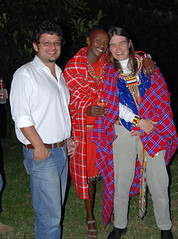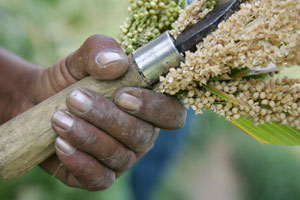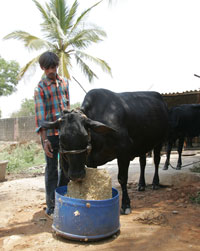Neue Studie: Bei immer wärmerem Wetter und sich verändernden Niederschlagsmustern könnte der Viehbestand für die afrikanische Landwirtschaft überlebenswichtig werden
Einer neuen Studie von Forschern des International Livestock Research Institute (ILRI) in Nairobi sowie der britischen Waen Associates zufolge könnten wärmere klimatische Bedingungen im Verein mit sich verändernden Niederschlagsmustern bis zum Jahr 2050 dazu führen, dass 500 0000 bis eine Million Quadratkilometer marginaler afrikanischer Anbauflächen nicht mehr in der Lage sein werden, die Produktion einer für den eigenen Lebensunterhalt ausreichenden Menge von Feldfrüchten zu unterstützen. Das Land, auf dem derzeit etwa 20 bis 35 Millionen Menschen leben, kann allerdings nach wie vor der Viehzucht dienen.
Für Millionen armer Landwirte in ganz Afrika könnte die Verstärkung der Viehproduktion eine attraktive Alternative bieten. In den kommenden Jahrzehnten werden sie möglicherweise feststellen, dass sich ihr Land aufgrund des Klimawandels zwar nicht mehr für den Ackerbau verwenden lässt, aber immer noch für die Aufzucht von Tieren geeignet ist. Das ergab eine Studie, die in dieser Woche in einer Sonderausgabe der Zeitschrift Environmental Science and Policy erscheint.
„Tiere, vor allem solche, die bekanntermaßen Hitze und Dürre gut vertragen, können in Bedingungen überleben, die für Feldfrüchte viel zu hart sind“, sagte ILRI-Wissenschaftler Philip Thornton, einer der Autoren des Beitrags. „Viehbestände können arme Haushalte vor den Risiken des Klimawandels schützen, und sie ermöglichen ihnen, von der wachsenden Nachfrage nach Tierprodukten in Afrika zu profitieren.“
„Der Viehbestand muss nachhaltig gesteigert werden“, sagte Carlos Seré, Generaldirektor des ILRI, eines der 15 von der Consultative Group on International Agricultural Research (Beratungsgruppe für internationale Agrarforschung, CGIAR) geförderten Forschungszentren. „Unsere Forschungen haben ergeben, dass in zahlreichen Gebieten Afrikas während der kommenden Jahrzehnte klimatische Anfälligkeiten im Verein mit der Marktnachfrage nach Tierprodukten viele Agrargemeinschaften dazu bringen werden, den Viehbestand ihrer Landwirtschaft zu vergrößern. Auf diesen zwangsläufigen Umstand müssen wir uns bereits heute vorbereiten.”
Die Untersuchung gehört zu einer in der Zeitschrift veröffentlichten Studienreihe, die aus einer Konferenz an der Oxford University über Nahrungsmittelsicherheit und Umweltwandel im April 2008 hervorging. Ihre Veröffentlichung fällt mit einer Konferenz zusammen, die in dieser Woche in Bonn stattfindet. Dort werden Experten aus der ganzen Welt erörtern, wie ein neues, weltweites Klimawandel-Abkommen der armen Landbevölkerung Anpassungsstrategien zur Verfügung stellen kann.
Thornton und sein Kollege Peter Jones von den britischen Waen Associates ermittelten zunächst, welche von der Landwirtschaft abhängigen Gebiete Afrikas am anfälligsten für die Auswirkungen des Klimawandels sind. Ihr Hauptaugenmerk legten sie dabei auf so genannte marginale Anbauflächen – trockene und halbtrockene Regionen West-, Ost- und Südafrikas, wo beispielsweise karge Niederschläge bereits jetzt regelmäßig in einer von sechs (oder
weniger) Anbauperioden zu Ernteausfällen führen.
Sodann untersuchten die Forscher die Auswirkungen des Klimawandels in diesen Regionen. Sie fanden heraus, dass selbst dann, wenn der Klimawandel durch weltweit reduzierte Kohlenstoffemissionen etwas gemäßigt wird, höchstwahrscheinlich immer noch eine große Zahl von Landwirten mit einer Verschlechterung der Anbaubedingungen rechnen muss. Maßgeblich war dabei in erster Linie die Frage, ob der Klimawandel gemäß zwei weit verbreiteten Klimamodellen – mit Vorhersagen auf der Grundlage von Szenarien hoher und niedriger Treibhausgasemissionen – dazu führen kann, dass die Anzahl der „sicheren Anbautage“ in den Jahren 2000 bis 2050 auf unter 90 sinkt.
Die Forscher kamen zu dem Schluss, dass bei Szenarien mit unverändert hohen Kohlenstoffemissionen die Anzahl der sicheren Anbautage für fast eine Million Quadratkilometer marginaler Anbauflächen in Afrika auf unter 90 sinken würde. Auf der Grundlage eines „niedrigeren Emissionsszenarios“ sagen sie voraus, dass etwa 500 000 Quadratkilometer die 90-Tage-Marke verfehlen würden.
Die Forscher warnen davor, dass dann, wenn in diesen Gebieten die Dauer der sicheren Anbauperioden auf unter 90 Tage sinkt, „der jetzt bereits marginale Maisanbau als normale landwirtschaftliche Tätigkeit im Grunde genommen nicht mehr möglich sein wird.“ An einigen Stellen könne der Regen so knapp werden, dass „selbst dürrebeständige Feldfrüchte wie Hirse“ schwer anzubauen sein werden. Unter diesen Bedingungen könne das Vieh für die
Ernährung ebenso entscheidend werden wie für die Erzielung von Einkünften.
Der Studie zufolge ermöglicht der Viehbestand insbesondere jenen auf marginalen Anbauflächen ums Überleben kämpfenden Landwirten eine erhebliche Einkommenssteigerung, die nicht weiter als eine Tagesreise von einer der afrikanischen Städte entfernt sind. Dort könnte eine wachsende Nachfrage nach Fleisch und Milchprodukten lukrative Märkte eröffnen.
Thornton und Jones wiesen darauf hin, dass es keine neue Idee ist, das Vieh als Bollwerk gegen schwierige klimatische Bedingungen zu betrachten. In ganz Afrika, so merken sie an, „erwies sich das Vieh als wichtiger Bewältigungsmechanismus für Arme, die unter schwierigen Umweltbedingungen versuchen, ihr Auskommen zu sichern.“
Nach Aussage Thorntons besteht das Ziel der Forschungsarbeit letztlich darin, anhand von Klimawandel-Vorhersagen bestimmte, möglicherweise relativ kleine Gebiete in Afrika auszumachen, wo es sich lohnt, den Besitz von Vieh auf Kleinbauernhöfen zu fördern und den Landwirten beim Umgang mit den damit einhergehenden Risiken zu helfen. Diese Art von Forschung könne allerdings, sollte sie zur Beeinflussung politischer Entscheidungen herangezogen werden, in hohem Maße von der Erhebung besserer Daten profitieren. Hierzu zählen Daten, mit denen mögliche Ortstemperaturen und Niederschlagsmuster in der Zukunft vorhergesagt werden können.
Wie er und Jones allerdings einräumen, „herrscht derzeit ein Missverhältnis zwischen jener dringend erforderlichen Art von lokalisierten Informationen über Klimawandelauswirkungen und dem, was objektiv zur Verfügung steht.“
So bestehe etwa ein Konsens darüber, dass die Temperaturen signifikant ansteigen werden. Doch stimmten in großem, regionalem Maßstab verschiedene Klimamodelle nicht immer darin überein, in welchem Ausmaß der Klimawandel Regenmengen und Niederschlagsmuster in einigen Teilen Afrikas beeinflussen könnte. Investitionen zur Beschaffung derartiger Angaben böten jedoch mit Sicherheit die Möglichkeit, Hilfsprogramme zur Linderung der Armut unter der armen Landbevölkerung Afrikas, deren Ernährung und Einkommen meistens von Kleinbauernhöfen abhängt, mit einem neuen Maß an Präzision und Effizienz auszustatten.
Wie die Forscher außerdem anmerken, werden bessere Daten unausweichlich eine Tatsache offenbaren, die manche nicht wahr haben wollen, der man aber dennoch ins Auge blicken muss: In einigen Teilen Afrikas, wo die Anbaubedingungen jetzt bereits schwierig sind, stoßen die Bemühungen, den Landwirten bei der Anpassung an den Klimawandel zu
helfen, ganz einfach an ihre Grenzen. So hart diese Tatsache sein mag – laut Thornton und Jones müssen Entwicklungsagenturen und Regierungen eines verstehen: Bei zunehmend unwirtlichen klimatischen Bedingungen für die Landwirtschaft wird an einigen Orten möglicherweise „ein Punkt erreicht, an dem Haushalte und Agrarbetriebe so stark unter Druck geraten, dass es zu einer Aufgabe der Landwirtschaft nur wenig Alternativen gibt.“
###
Über International Livestock Research Institute
Das in Afrika beheimatete International Livestock Research Institute (ILRI) arbeitet an den Schnittstellen zwischen Tierhaltung und Armut und trägt durch hochqualifizierte wissenschaftliche Arbeit und Fortbildungsmaßnahmen zur Bekämpfung von Armut und zur nachhaltigen Entwicklungsförderung bei. ILRI ist eines von 15 durch die Consultative Group on International Agricultural Research (Beratungsgruppe für internationale Agrarforschung, CGIAR) unterstützen Zentren. Die Hauptverwaltung ist in Kenia; ein Hauptcampus befindet sich in Äthiopien. Vor Ort sind außerdem Teams in Nigeria, Mali, Mosambik, Indien, Thailand, Indonesien, Laos, Vietnam und China im Einsatz. Weitere Informationen finden Sie unter www.ilri.org.
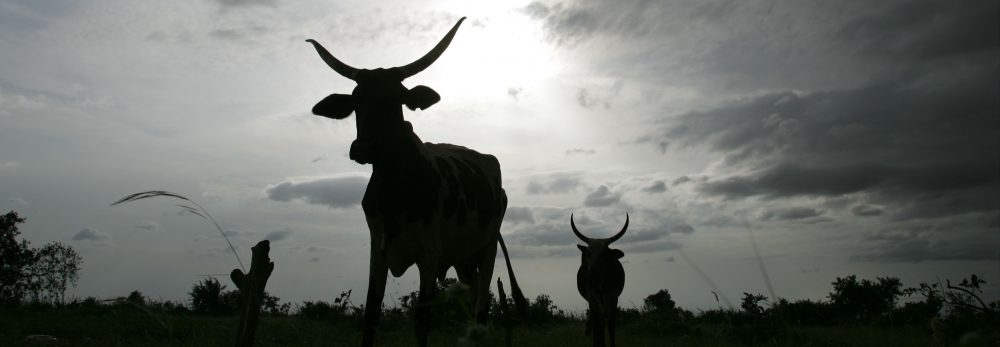
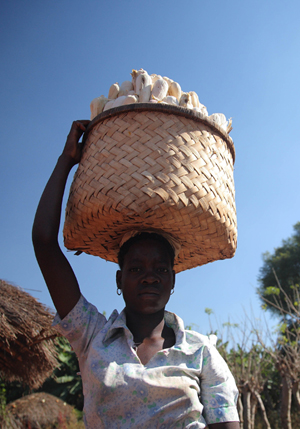 A
A 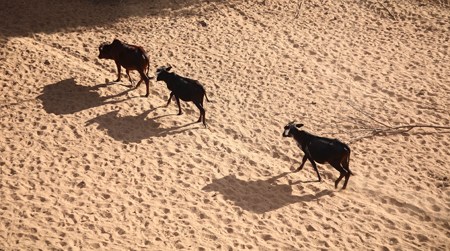

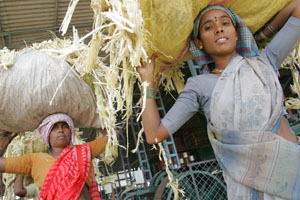

 Michael Blummel
Michael Blummel Iain Wright
Iain Wright
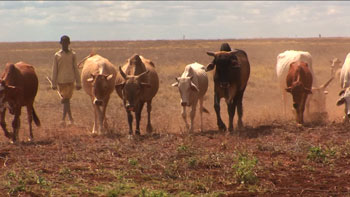



 Joseph M. Maitima
Joseph M. Maitima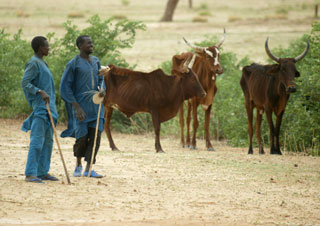
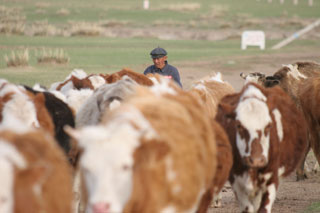
 Dramatic losses of plant diversity, including fodders and forages that feed livestock, are one of the greatest challenges facing sustainable development today. Soaring human populations are eroding the world’s plant genetic diversity and other natural resources. Increasing demands for human food, along with urbanization, pollution and land degradation, are squeezing out hardy fodder and forage plants that allow half a billion poor people to keep livestock. These fodders and forages are vital today. In future, they may become the only way poor livestock keepers are able to adapt to climate and other changes.
Dramatic losses of plant diversity, including fodders and forages that feed livestock, are one of the greatest challenges facing sustainable development today. Soaring human populations are eroding the world’s plant genetic diversity and other natural resources. Increasing demands for human food, along with urbanization, pollution and land degradation, are squeezing out hardy fodder and forage plants that allow half a billion poor people to keep livestock. These fodders and forages are vital today. In future, they may become the only way poor livestock keepers are able to adapt to climate and other changes. 



